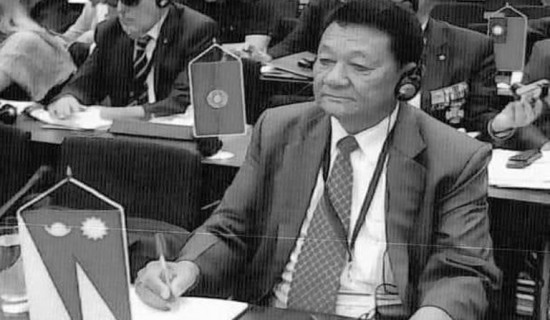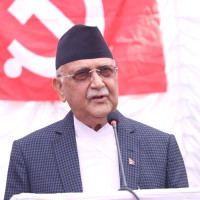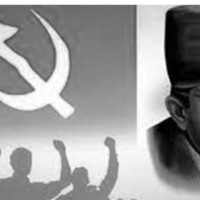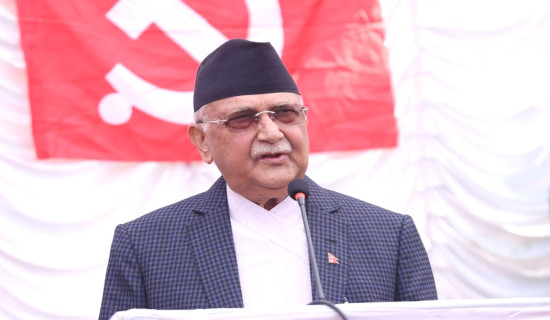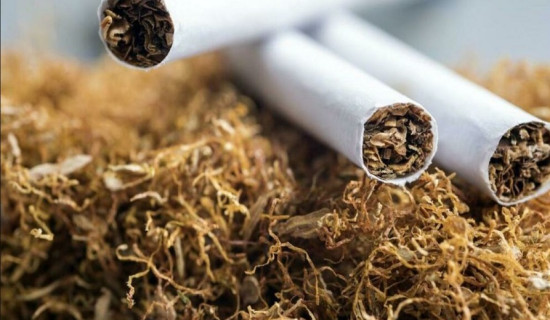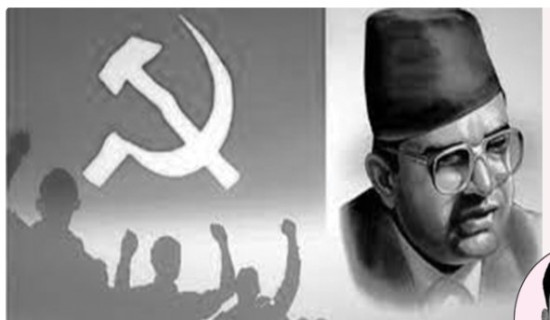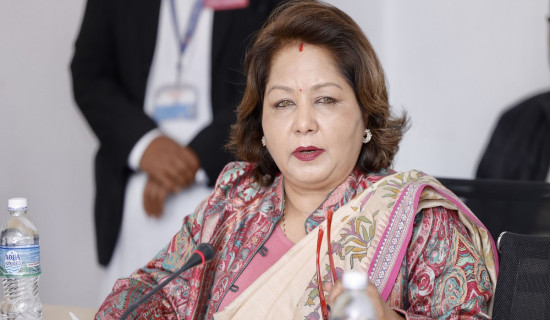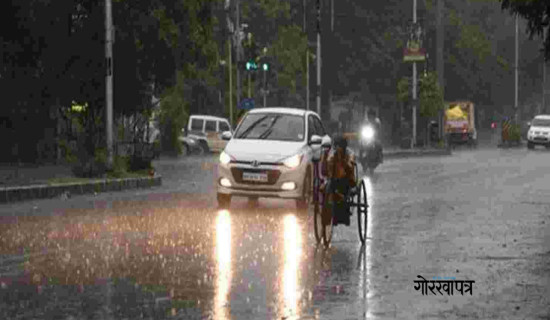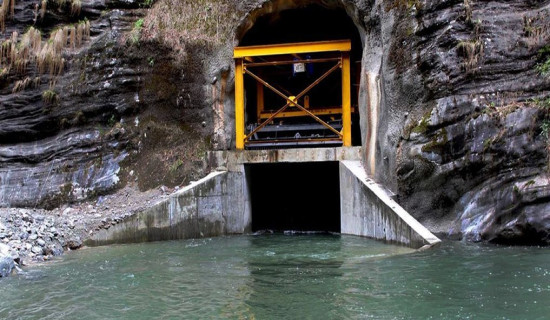- Saturday, 17 May 2025
Young generation's bid to revive Kusunda language
By Diwakar Pokhrel, Deukhuri, Aug. 30: “Manni Wayan Chiyu Bhaya.” (It is really good brother)
Hima Kusunda of Budhichaur, Sarumarani Rural Municipality–6, Pyuthan commented on the photo her brother posted on Facebook.
Similarly, Tej Bahadur Kusunda of Kurmi, Gurbhakot Municipality–5, Surkhet posted a group photo and wrote:
“Toka Manni Wayan Chiyu.” (We are very good)
At a time when the Kusunda language is nearing extinction with only one speaker remaining, the younger generation of the community are trying to keep it alive by learning it themselves.
Talking to The Rising Nepal, Hima said that talking in her community’s language gave her a profound sense of belonging. “Everyone has their language and so do we,” she said. “But ours is on the verge of disappearance. That is why we are using and publicising as many words as we know.”
Gyani Maiya Kusunda was the last native speaker of the language. However, she died in 2020. Now, Rolpa’s Kamala Sen Kusunda is the only speaker left. She is not as fluent as Gyani Maiya but she holds a significant amount of knowledge and researchers and the government are trying to use her to teach the language to Kusunda youths.
In 2018, when Gyani Maiya was still alive, the Language Commission had conducted the first round of Kusunda language classes for 20 students, 17 Kusundas and three non-Kusundas. Conducted under the Commission’s ‘Dead Language Inter-Generational Transfer Programme’, these classes continued after Gyani Maiya’s death too and are now in their fourth phase.
The first phase of the class was only based on simple collected words. However, from the second phase onward, the classes have been based on a formal textbook titled ‘Kusunda Gipan.’
Dr. Lava Deo Awasthi, chairman of the Language Commission, stressed that it was extremely important to preserve the Kusunda language as it was a totally unique bhasha unrelated to any other linguistic families of the world. “That is why we are focusing on teaching this language to both children and adults.”
He informed that the local governments had also supported them in conducting the classes.
The Kusunda community is also very happy at the efforts being made to protect their language. Dhan Bahadur Kusunda, chairman of the Kusunda Bikas Samaj, said that this provided the children a much-needed opportunity to connect with their roots. “I am a Kusunda. Yet, I don’t speak the language. This had in turn hampered my children’s ability to learn the language. But now, they have a way. This makes us very happy.”
While this is a positive campaign, many Kusunda activists fear that it may not be enough as the last native speaker died without passing on the language to others and the people learning through the present classes are also not using it in conversations at home. A language is meaningless unless it comes into daily use, they argue. So, many are asking authorities to establish an integrated Kusunda village and study their language in depth.
See Page 6
According to linguistic researcher Uday Raj Ale, several international scholars have researched and analysed the language. British ethnologist Brian Hodgson studied 223 Kusunda root words 200 years ago.
Similarly, in 1968, American anthropologist Dr. Johan Reinhard collected more than 350 Kusunda words and studied Kusunda culture in Gorkha and Surkhet. In 2004, David Watters studied more than 850 words and prepared the language’s first grammar book.
Since 2008, Ale has also been studying the language. He has also published a dictionary containing more than 1,000 Kusunda words with their Nepali and English translations.
He has also prepared a book on Kusunda grammar which is awaiting publication.
As per the statistics provided by the Kusunda Samaj, there are 273 Kusunda individuals living in the country. However, official data regarding the Kusunda population is not available as the Central Bureau of Statistics has not released the full report of the 2021 census. In 2011 though, there were 156 Kusundas in the country.



